Introduction:
In the lush, verdant landscapes of Ireland, where folklore and history intertwine, lies the storied origin of one of the world’s most beloved spirits: Irish whiskey. The journey of Irish whiskey is as rich and complex as its taste, stretching back over centuries to an era when ancient techniques were the cornerstone of distillation. This article, delves into the early beginnings of whiskey making in Ireland, offering a glimpse into a time when monastic influence reigned, and the first distilleries laid the groundwork for a legacy that endures to this day.
From the mysterious alchemy practiced by early Irish distillers to the monastic mastery that shaped the craft, we will explore how Ireland became the birthplace of this exquisite spirit. The narrative will guide us through the corridors of the earliest distilleries, revealing the traditional techniques that defined and refined the art of Irish whiskey making. As we journey through the annals of history, we will discover how these early endeavors have influenced and evolved over time, contributing to the global appeal and enduring legacy of Irish whiskey.
Join us as we embark on a spirited exploration of Irish whiskey’s Gaelic ancestors, tracing the steps of the ancient distillers whose passion and skill gave birth to a timeless tradition.
Ancient Alchemy: The Dawn of Distillation in Ireland
The story of Irish whiskey begins in a time shrouded in mystery, where the lines between history and legend blur. It’s widely believed that the art of distillation, which is central to whiskey making, was introduced to Ireland by traveling monks in the 6th or 7th century. This transformative technique, which originated in ancient Mesopotamia and later spread through the Islamic world to Europe, found a welcoming home in Ireland’s monasteries.
These early distillers were not creating whiskey as we know it today. Instead, they were likely experimenting with perfumes, medicinal cordials, and other distilled concoctions. However, it was through these experiments that the fundamental principles of whiskey distillation were developed. The Irish term for whiskey, “Uisce Beatha,” meaning “water of life,” reflects the high esteem in which these early distillations were held.
The process in these ancient times was primitive by today’s standards. Distillers used small, basic pot stills, often made of copper, and local ingredients such as barley. The lack of aging meant that the spirit was potent, clear, and quite different from the amber-hued whiskey we recognize now. Yet, these rudimentary methods laid the groundwork for the sophisticated techniques of later generations.
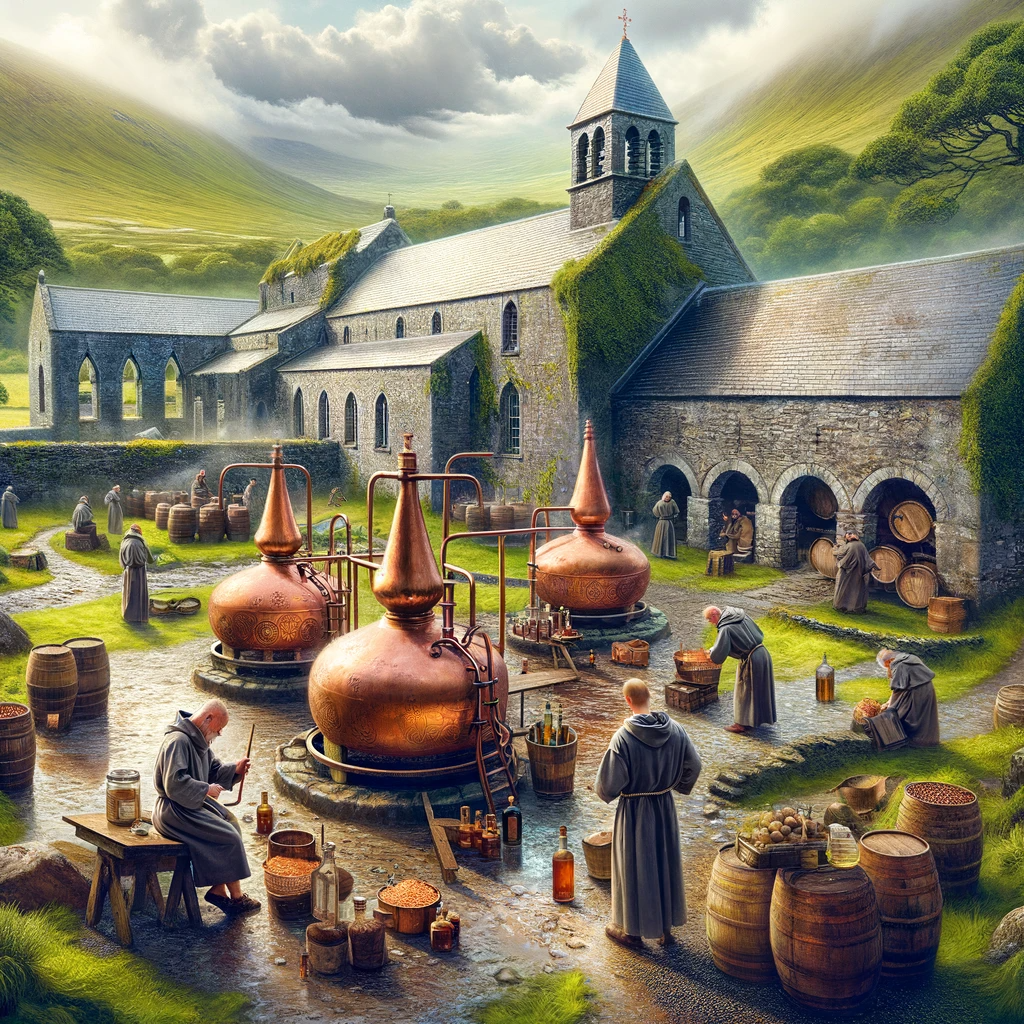
The first recorded mention of whiskey in Ireland comes from the Annals of Clonmacnoise, dating back to 1405, over a century before it was documented in Scotland. This reference to whiskey indicates its significance in Irish society by that time, hinting at a well-established tradition of distillation.
As whiskey’s popularity grew, the techniques evolved. The introduction of aging in wooden casks, a practice likely borrowed from wine preservation methods, marked a significant advancement. This process softened the harshness of the raw spirit and imbued it with flavors from the wood, gradually transforming Irish whiskey into the smoother, more nuanced drink we cherish today.
Irish whiskey’s early days were marked by a spirit of innovation and adaptation, setting the stage for a rich, enduring legacy. In our next section, we’ll delve into the role of monastic communities in refining and spreading the art of whiskey making across Ireland.
Monastic Mastery: How Monks Shaped Early Whiskey Making
The monasteries of ancient Ireland were not just centers of spiritual guidance but also hubs of learning and innovation, particularly in the art of distillation. The monks, renowned for their scholarly pursuits and meticulous record-keeping, played a crucial role in refining the techniques of whiskey making and ensuring its survival through turbulent times.
Irish monasteries in the medieval period were known for their self-sufficiency. They cultivated crops, including barley, which was a key ingredient in the early production of whiskey. The monastic gardens also provided various herbs and spices, allowing for experimentation with flavors in the distillation process. This period saw the transition from using whiskey for medicinal purposes to recognizing it as a beverage.
The isolation of these monasteries offered an ideal setting for perfecting distillation techniques. The monks’ dedication to craftsmanship and their detailed observations led to a gradual improvement in the quality of the spirit. They discovered that aging the whiskey in wooden casks, a practice observed from the storage of other spirits and wines, greatly enhanced its flavor and smoothness.
Monks traveling between monasteries shared their techniques, leading to a wider distribution and appreciation of Irish whiskey.
As monastic communities were often connected across Ireland and Europe, they played a pivotal role in spreading the knowledge of whiskey making. Monks traveling between monasteries shared their techniques, leading to a wider distribution and appreciation of Irish whiskey.
The dissolution of the monasteries in the 16th century by Henry VIII marked a significant turning point. This event forced whiskey making to move out of the monastic setting and into the hands of the lay population. It was during this time that whiskey making began to take root more firmly in Irish culture, moving from a monastic secret to a widespread craft.
The legacy of the monks in the evolution of Irish whiskey is undeniable. They laid the foundations of what would become a world-renowned spirit, blending their knowledge of distillation with a passion for quality. Their influence is still felt in the whiskey we enjoy today, a testament to their skill and dedication.
First Distilleries: Establishing the Foundations of Irish Whiskey
As whiskey making transitioned from monastic to lay hands, the establishment of the first official distilleries marked a pivotal chapter in the history of Irish whiskey. This transition was not just a change of location, but also an evolution in scale, technique, and legal status.
The earliest known licensed distillery in Ireland was the Old Bushmills Distillery in County Antrim, which obtained its license in 1608. However, the practice of distilling whiskey was widespread in Ireland long before this date, often conducted in small, makeshift stills in rural areas. The legalization of distilleries brought about a significant shift, as whiskey production moved from being a largely hidden craft to a recognized industry.
These early distilleries were often family-run enterprises, deeply rooted in their local communities. They were places where the skills and secrets of whiskey making were passed down through generations. Distillers took pride in their craft, constantly refining their methods to produce a smoother, more palatable spirit.
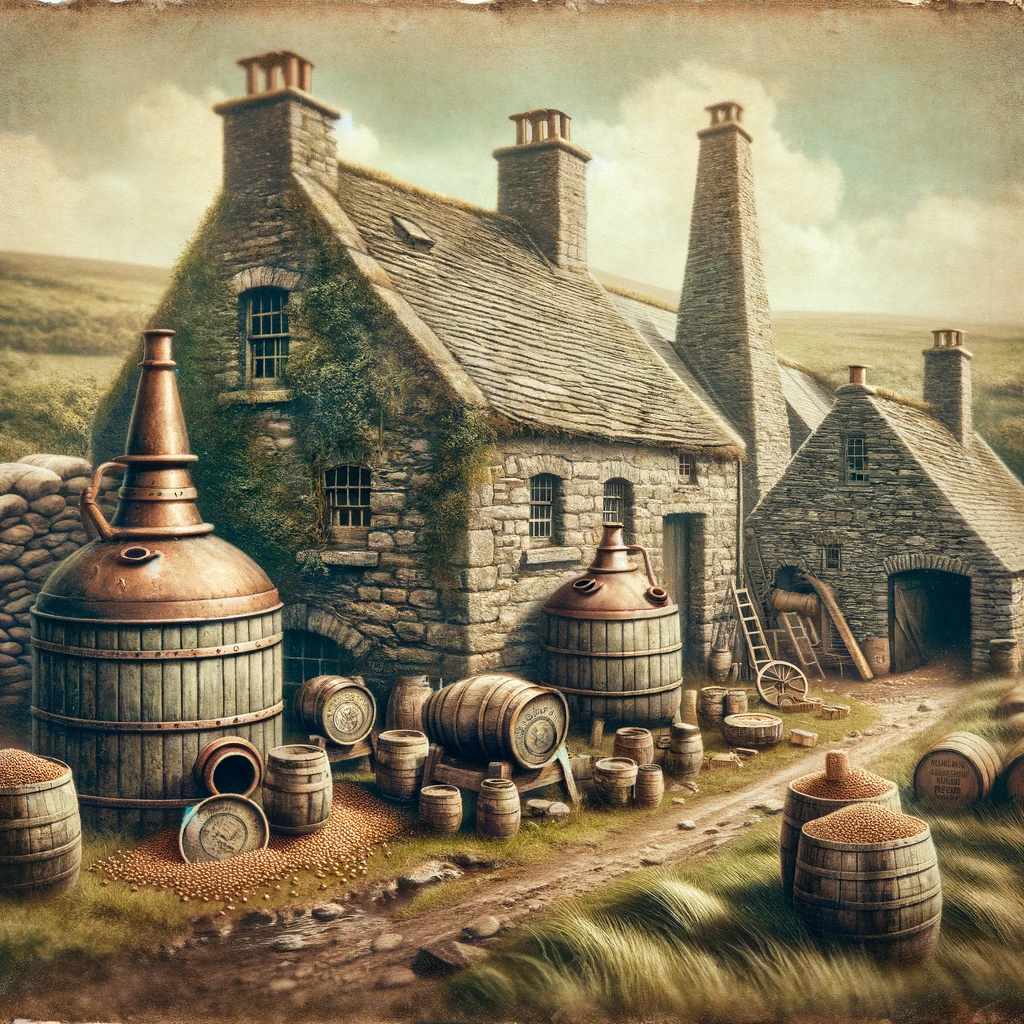
The design and operation of these first distilleries were rudimentary compared to modern standards. They typically featured pot stills, which were essential for creating the full-bodied, flavorful spirit characteristic of traditional Irish whiskey. The use of local ingredients, such as Irish barley and pure spring water, also played a crucial role in shaping the distinct taste of the whiskey.
Despite the official licensing, many illegal stills continued to operate across Ireland. These illicit operations, often hidden in remote areas, contributed to a diverse and rich whiskey-making tradition. They represented a spirit of resilience and independence, characteristics that resonate deeply in Irish history and culture.
The establishment of the first distilleries laid the groundwork for what would become a booming industry, shaping the identity and global reputation of Irish whiskey. As we explore the traditional techniques in our next section, we’ll delve deeper into the artistry and ingenuity that defined early Irish whiskey making.
Traditional Techniques: The Art of Ancient Irish Whiskey Making
The art of making Irish whiskey in the early days was as much about tradition as it was about technique. These traditional methods, honed over centuries, contributed significantly to the unique character and quality of Irish whiskey.
One of the most critical aspects of traditional Irish whiskey making was the use of malted barley. The process of malting involves soaking the barley in water and then allowing it to germinate. This germination was halted by drying the barley in kilns. In Ireland, these kilns were traditionally fired by peat, imparting a distinctive smoky flavor to the barley. However, not all Irish whiskey used peated malt, leading to a variety in flavors and styles.
Another key technique was the triple distillation process. While not exclusive to Irish whiskey, it became a hallmark of the style. Triple distillation removes more impurities than double distillation, commonly used in Scotch whisky, resulting in a smoother and lighter spirit.
The pot still, a type of still used in early Irish whiskey making, also played a crucial role. Unlike the column stills used in later years for continuous distillation, pot stills were used in a batch process. This method allowed for greater control over the distillation, enabling the distiller to better capture the desired flavors.
Triple distillation removes more impurities than double distillation, commonly used in Scotch whisky, resulting in a smoother and lighter spirit.
Aging the whiskey in wooden barrels was another tradition that evolved over time. Initially, the whiskey was stored in whatever containers were available, often wooden casks that had previously held wine, sherry, or other spirits. This practice led to the discovery that aging in wood not only mellowed the whiskey but also added depth and complexity to its flavor profile.
Lastly, the geographical and climatic conditions of Ireland played a significant role. The cool, damp Irish climate is ideal for aging whiskey, as it leads to slower maturation and a more subtle extraction of flavors from the wood.
These traditional techniques, passed down through generations, formed the foundation of Irish whiskey making. They reflect a deep respect for the craft and a commitment to quality that has defined Irish whiskey throughout its history.
The Legacy of Early Irish Whiskey: Influences and Evolution Over Time
The early methods and traditions of Irish whiskey making have left an indelible mark on the spirit’s history and character. Over centuries, these practices have evolved, but the legacy of the early distillers remains evident in the whiskey we enjoy today.
The influence of early Irish whiskey extends beyond its unique flavor profile. It played a significant role in the social and economic fabric of Ireland. Distilleries were often at the heart of communities, providing employment and contributing to local economies. The spirit itself became a symbol of Irish culture and heritage, celebrated in literature, music, and folklore.
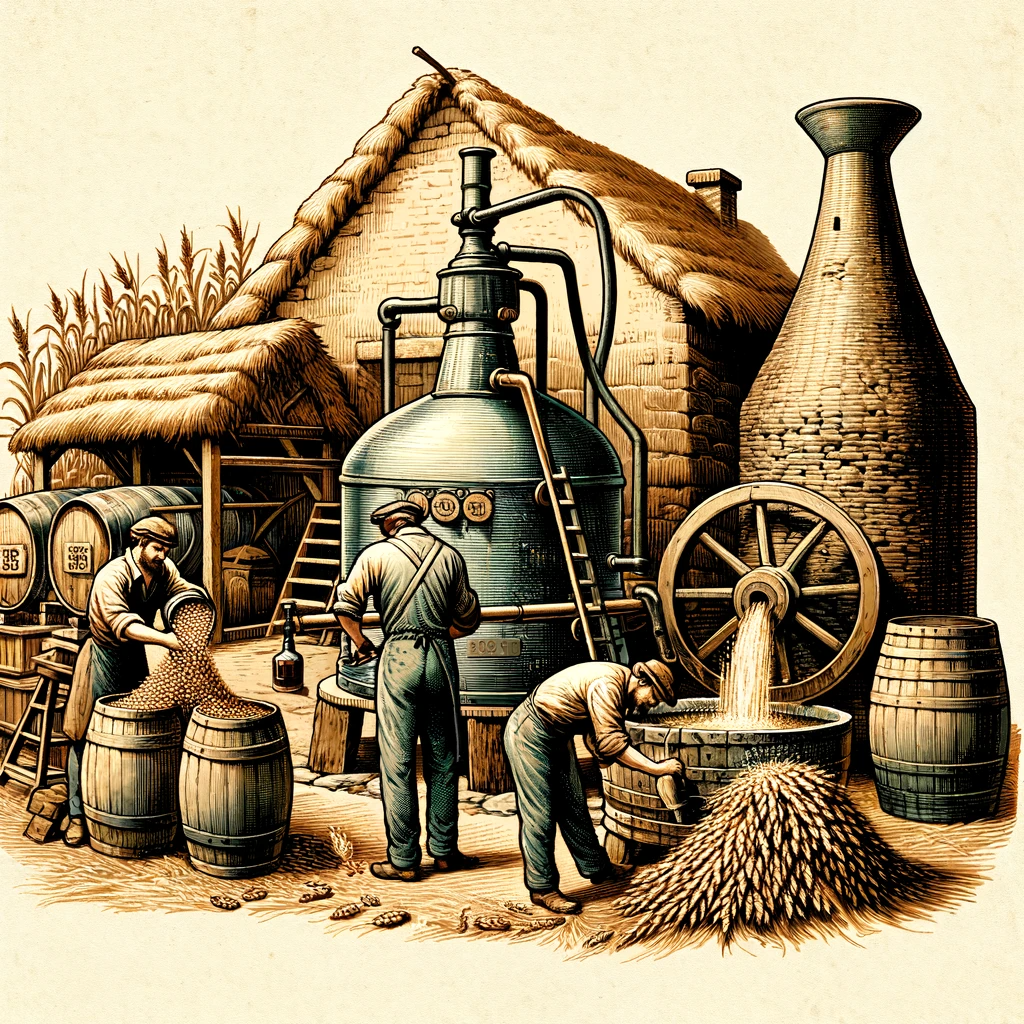
As Irish whiskey traveled the world, it inspired and influenced distilling practices in other countries. Notably, Irish immigrants to the United States brought their whiskey-making knowledge with them, significantly impacting the development of American whiskey varieties, including bourbon.
The evolution of Irish whiskey has seen its share of challenges. Economic struggles, changing tastes, and Prohibition in the United States led to a decline in its popularity in the early 20th century. However, the resilience and enduring appeal of Irish whiskey have led to a remarkable resurgence in recent decades. This revival has been fueled by a blend of tradition and innovation, with distilleries both old and new embracing the ancient art while also experimenting with new techniques and flavors.
Today, Irish whiskey is celebrated worldwide for its smoothness, diversity, and rich heritage. From small craft distilleries to large-scale producers, the spirit of the early whiskey makers lives on. Their legacy is not just in the whiskey they created but in the enduring traditions and stories that continue to captivate whiskey enthusiasts around the globe.


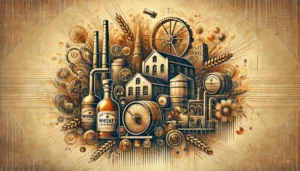
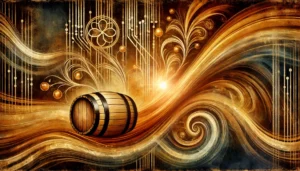


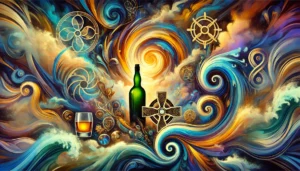

Be First to Comment